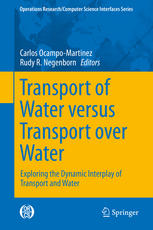

Most ebook files are in PDF format, so you can easily read them using various software such as Foxit Reader or directly on the Google Chrome browser.
Some ebook files are released by publishers in other formats such as .awz, .mobi, .epub, .fb2, etc. You may need to install specific software to read these formats on mobile/PC, such as Calibre.
Please read the tutorial at this link: https://ebookbell.com/faq
We offer FREE conversion to the popular formats you request; however, this may take some time. Therefore, right after payment, please email us, and we will try to provide the service as quickly as possible.
For some exceptional file formats or broken links (if any), please refrain from opening any disputes. Instead, email us first, and we will try to assist within a maximum of 6 hours.
EbookBell Team

0.0
0 reviewsThis book aims at stimulating discussion between researchers working on state of the art approaches for operational control and design of transport of water on the one hand and researchers working on state of the art approaches for transport over water on the other hand. The main contribution of the book as a whole is to present novel perspectives ultimately leading to the management of an envisioned unified management framework taking the recent advances from both worlds as a baseline.
The book is intended to be a reference for control-oriented engineers who manage water systems with either or both purposes in mind (transport of water, transport of goods over water). It highlights the possible twofold nature of water projects, where water either acts as primary object of study or as a means. The book is dedicated to comparing and relating to one another different strategies for (operational) management and control of different but strongly related systems in the framework of the water. In that sense, the book presents different approaches treating both the transport of water and transport over water. It compares the different approaches within the same field, highlighting their distinguishing features and advantages according to selected qualitative indices, and demonstrates the interaction and cross-relations between both fields. It will also help to determine the gaps and common points for both fields towards the design of such a unifying framework, which is lacking in the literature. Additionally, the book looks at case studies where the design of modeling/control strategies of either transport of water or transport over water have been proposed, discussed or simulated.